Motivation | Look | Visited Sky Objects | First Experiences | Issues and Solutions | Photo Attempts | First Conclusions | Links | Appendix: Data
On this page I provide some information about my TS-Optics PHOTOLINE 102mm f/7 FPL53 Triplet APO Refractor - 2.5" RPA Focuser (received on July 8, 2020); the focal length is 714 or 715 mm (I was not able to clerify that...). For simplicity, I will mostly call it (TS-Optics) TLAPO1027. I use this telescope for quick-and-dirty observations and also for EAA sessions (with photos).
See the appendix for the data.
| Note: All in all, I have unfortunately used my TLAPO1027 refractor far too little, so I sold it to a star friend in the beginning of October 2024. I therefore can no longer report any further experiences with this scope here. |
Refractors are praised again and again for their sharp and constrasty image, but also criticized because of their color aberrations. Only refractors with very expensive glass seem to be free of color aberrations. And not always seems too be "ED" inside where there is "ED" written on the tube... Although I had no experiences with refractors initially, the praises that I have read have enticed me again and again to purchase one. Every time I found a cheaper refractor on the Internet, I called my astronomy dealer and asked him for his opinion on the respective device. And he advised against it again and again because of the strong color fringing, so that I never actually purchased a refractor.
But then I bought one at the AME2018 astronomy fair in Villingen-Schwenningen in September 2018. Again, it had an "ED" on it and in its name, but as the salesman told us and as I later found out, it exhibits quite a lot of color fringing, although I do not find this disturbing.
In autumn 2019, I even borrowed a SkyWatcher StarTravel 120 refractor, which is really called a "paint bucket" or "paint thrower" (Fraunhofer type), and rightly so. I was tempted by its large aperture of 120 mm, and with a focal length of 600 mm, it is a good rich-field telescope, especially because the color fringes are hardly noticeable when observing DSO; this is definitely different at the moon and the planets or when observing during the day. In the end, I did not the ST120, because everyone around me said that I did not need such a device, because it is too similar to my other telescopes, especially to my 6" Newton. This is true from the data, but while I do not consider the Newton to be suitable for travel, the ST120 is...
Even after a certain change in my telescope equipment (C8 exchanged for 6" Newton), I still longed for a refractor with pure colors, and I was also willing to spend a little more money for it (about 2000 EUR). When I wanted to reward myself for some "personal reason", the time had come for me to buy a refractor. I chose some models and asked my astronomy dealer for his opinion on them. This time I, was "absolutely right" with a refractor from TS-Optics! I had however a more expensive, similar model in mind and wanted to buy this with a lighter focuser. First of all, according to my dealer, both tubes were identical, even if some Websites state slight differences, and secondly, a conversion to a lighter focuser did not seem possible, although TS-Optics advertises with it on its Website. There were also inconsistencies in the tube weights...
In the end, I decided for the device suggested by my dealer, the TLAPO1027 from TS-Optics. But all of a sudden, this device was no longer available from my dealer, and he did not receive a delivery of already promised devices either. After some back and forth, we postponed to "later" (in several months, how many, was unknown...). When I then went back to my dealer for another similar refractor, he advised me not to buy it, but he wrote that I should buy the TLAPO1027 if I would find it at another dealer, because "it is worth it". In fact, I bought it from another dealer who stated on his Website that he was able to deliver it within 1-4 days. But the dealer was probably not aware of the seriousness of the delivery situation. Astonishingly, after some back and forth he was able to deliver it (drop shipment from TS-Optics), because in some corner at TS-Optics a last sample could be found. That actually arrived at my home! However, someone must have taken the "drop shipment" too literally, because the "very stable aluminium case" was unfortunately damaged. In fact, it is a cardboard case with aluminum fittings, and the cardboard has a brittle plastic layer on top. Actually, it is a brazen advertising lie to call such a case an aluminium case. By the way, I had a similar problem with the Omegon PS 72/432 travel case... For details, see below.
Unpacking |
||
|
Outer box |
Ditto, opened |
Ditto |
|
Outer box opened and inner box |
Inner box taken out |
Inner box opened - transport case visible |
|
Ditto |
Transport case taken out of the box |
Transport case |
Telescope Tube |
||
|
Transport case opened, telescope visble |
Telescope taken out of the box |
Plastic bag removed |
|
Telescope, front lid srcewed off |
Ditto |
Ditto, side view |
|
Ditto, focuser lid removed |
Ditto, turned |
Ditto, dew cap at full length |
Details |
||
|
Focuser, cap for focus knob in place, self-centering adapter for accessories and eyepieces in place
|
Focuser, self-centering adapter for accessories and eyepieces removed |
Ditto |
|
Self-centering adapter for accessories and eyepieces, lid removed |
Focuser, self-centering adapter for accessories and eyepieces, lid |
Ditto, other view |
|
Focuser, self-centering adapter for accessories and eyepieces in place, focuser cap removed |
|
|
Horizontal, dew cap extended |
Vertical, dew cap extended |
Oblique, dew cap extended |
Ditto, dew cap retracted |
So far, I have visited the following sky objects with the TS-Optics TLAPO1027:
On the first day, I already performed a daylight comparison with my Omegon PS 72/432. As a two-lens ED refractor, it should be inferior to a three-lens APO. That is how the Omegon salesman had presented it on a fair - and that is how it was! The TLAPO1027 showed almost no color fringes, whereas the PS 72/432 showed partly quite a lot of them. Visually, the difference was almost astounding. In addition, the image in the APO was much more uniformly sharp and therefore much more pleasant to look at.
I took a lot of photos with the Sony RX100 M4 held to the eyepiece, but it is difficult to get really comparable photos to prove the differences. I present some of these photos below.
And in the first night I also made a very first comparison test with the PS 72/432 on the globular star cluster M 3. Both telescopes were operated at a magnification of about 100 x (4 mm eyepiece on PS72 and 7 mm eyepiece on TLAPO1027). In this test, the TLAPO was again clearly superior, showed a brighter image and more details, that is, a better resolution into stars.
A subsequent short test on Jupiter and Saturn also showed an advantage for the TLAPO1027, but not as clearly as with M 3.
Three weeks later I did a second comparison test with the PS 72/432 at night. I observed the moon, Saturn and Jupiter, as well as the three DSO M 13 (Hercules Cluster), Cr 399 (Coat Hanger), and M 11 (Wild Duck Cluster), three "classics".
It was a day after half moon, which I observed at 27 x (16 mm/26 mm) and a about 40 x (10 mm/16 mm). In general, the APO was better and its image had more contrast; after I adjusted the sharpness a bit, the PS72 became more on par with the APO; but at 40 x, the image of the PS72 was already quite flat, and the APO was much better. Down in the south of the moon where there are many craters around Clavius, the PS72 showed yellow color fringes; at the edge of the moon, the APO had color fringes, as well, sometimes yellow and sometimes blue ones, depending on the eyepiece... Among other things, I observed: Rules Alpes, Rupes Recta, Rupes Altai, and many small mountains in the sea (e.g. Montes Spitzbergen). The small crater Ammonius (8 x 9 km) in the crater Ptolemy only appeared in the APO (all white), later also in the PS72...
I observed Saturn at a magnification of up to 100 x (4/7mm), Jupiter up to 100 x, in the APO also up to nearly 180 x (4 mm). Then clouds appeared... At the planets, the differences between the refractors were not as obvious as at the moon.
Finally I searched for M 13, Cr 399 and M 11, and with a lot of luck I found them without a viewfinder!
Especially at the moon and at the globular star cluster M 13, the TLAPO1027 showed its superiority over the PS 72/432!
At the beginning of October 2020, I did a third comparison test with the PS 72/432 during the night. During this test I observed Saturn and Jupiter, as well as the two globular star clusters M 13 (Hercules cluster) and M 92, again "classics".
Once more, the APO performed better and the image was more contrasty, whereas the image in the small refractor turned faint more early than in the large one. This is not surprising, if you look at the exit pupils at the same magnification. In addition, the larger refractor collects twice as much light as the smaller one. All in all, I made enough comparisons to be sure that I do not regret the purchase of the TLAPO1027, even if it is much bigger than the PS72/432, and therefore requires a sturdier mount.
Perhaps, I should conduct another comparison with the Skymax-127, which has a slightly larger aperture, but also a lot of obstruction...
On December 28, 2020, I did a quick comparison with four of my telescopes using the Orion Nebula M 42/43, which the TLAPO1027 clearly won (nearly full moon, moon close to Orion). The order was: PS 72/432 < C5 < Skymax-127 < TLAPO1027.
Unfortunately the transport case arrived slightly damaged at my home:
|
Damage left |
Ditto |
Damage from above |
|
Damage from above |
Damage from above/front |
Damage, front view |
I therefore sent e-mails with photos to the dealer APM and the supplier/manufacturer TS Optics. The same evening, TS Optics regretted me, but, although being the sender, declared to be not responsible. APM took a week to react and then offered me 50 EUR "compensation". I accepted this suggestion, especially since I do not use the case, but bought a Geoptics bag for storage and travel use, instead:
|
A warning! |
First test |
Tube in the bag |
|
I put a cardboard at the bottom |
Test with styropor parts... |
... and plastic bag |
|
Ready for travelling! |
The TLAPO1027 is supplied without a rail for attaching the tube to a mount. I therefore ordered one from my astronomy dealer. This was a 13.7 cm Vixen rail:
|
Vixen rail (13,7 cm) |
Ditto, detail |
Ditto |
This rail fit, but firstly it seemed a bit short to me (because the tube is so long), and secondly the tube with the rail attached did not fit well into the polystyrene recesses of the transport case. I therefore replaced this rail with one that is 20 cm long (not shown) and fits well into the recesses:
|
Vixen rail (20 cm) mounted, everything fits |
Ditto, clamp turned |
Ditto, detail |
There are a number of wheels and screws at the focuser, the function of which was in part unknown to me:
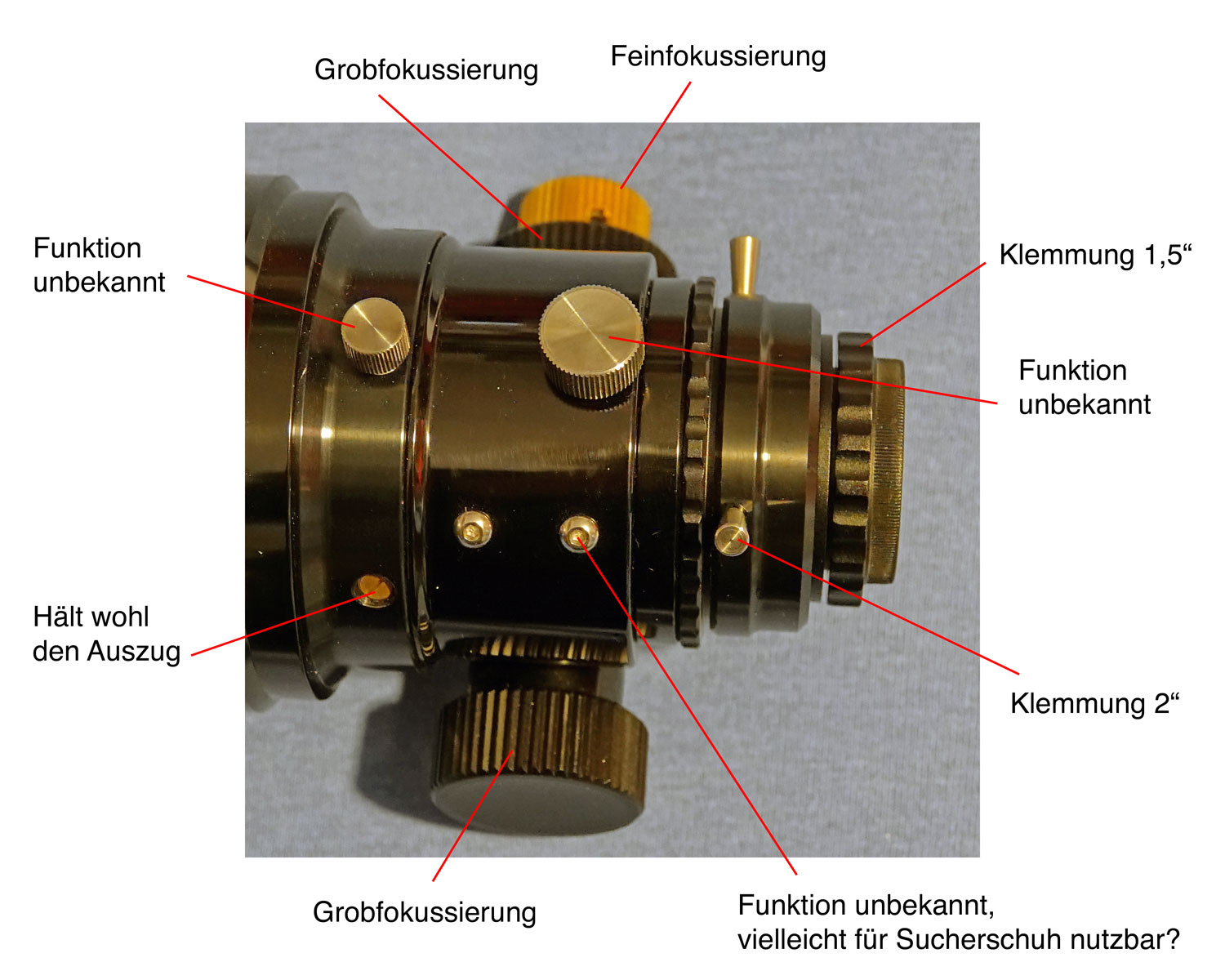 |
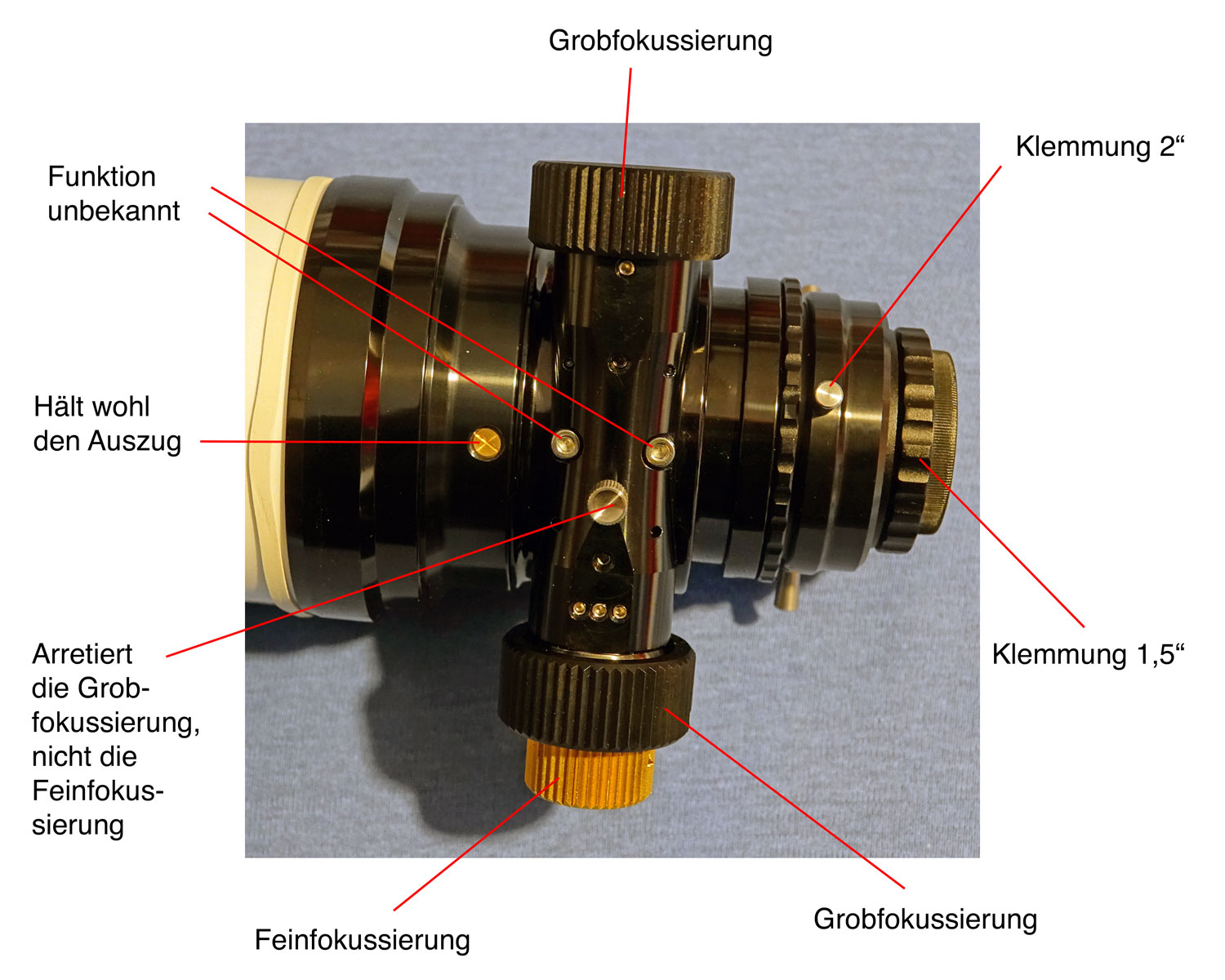 |
In the meantime, I was able to clarify the meaning of the screws with the help of my astronomy dealer Mr. Kloß, especially that the Allen screws are indeed intended for a finder shoe (see below).
Like many other refractors, such as my Omegon PS 72/432, the TLAPO1027 is delivered without a finder shoe. Why this is so, is a mystery to me, because without a finder, I can find only a few sky objects. My astronomy dealer therefore recommended that I attach a finder shoe to the clamps, but that did not seem so easy to me, even less so if it has to be a Rigel finder. More about this below!
In order to make first experiences with the Rigel finder, I "designed" a rubber band construction for the finder shoe, which is put on the dew cap, like I did with the PS 72/432. This is the easiest way to start, and that is where the finder shoe fits best. But probably, the finder is too distant and has to be moved backwards. Since I do not have enough double-sided adhesive tape left, I decided not to use it. But this means that the finder moves at the slightest touch and has to be realigned.
|
Rigel viewfinder attached with rubber bands, seen from behind |
Ditto, oblique front view |
Ditto, more distant view |
For quite some time, I had not used the TLAOP1027, because for various reasons my eVscope had priority. In October 2020 (Oct 10, 2020) I dealt with the "viewfinder problem" once again. On the one hand, I screwed a red-dot finder to the rear clamp to see whether it could be used that way. It was, however shifted by 90° to the eyepiece; 45° or less would have been better. On the other hand, I moved the Rigel viewfinder shoe to the back, because it was difficult to look through the viewfinder when it was sitting in the front of the dew cap. I wanted to try out the red-dot finder at night and I was able to do so. All in all I, was able to work with it even in this unfavorable position. I did not try out the Rigel finder. On the one hand, the shoe, which was held by rubber bands, was sitting very "wobbly", on the other hand, I needed the Rigel finder for my second refractor. Here are a few photos of my attempts:
|
Red-dot finder mounted to the rear clamp, rear view |
Red-dot finder mounted to the rear clamp, rear view |
Rigel finder fixed with rubber bands, rear view |
|
Rigel finder fixed with rubber bands, front view |
Rigel finder fixed with rubber bands, rear view |
Ditto |
After it did not work out with the Rigel finder, I inquired and found out that there are two "empty Allen screws" on the eyepiece extension, which are meant to hold a finder shoe. However, they sit behind each other and not next to each other. So I ordered a matching TS-Optics finder shoe with elongated holes and a red-dot finder from my astronomy dealer and installed them without much effort. But I put some plastic between the eyepiece extension and the finder shoe to avoid scratching the extension too much...
|
Eyepiece extension with two Allen screws meant to hold a finder shoe |
Screws removed to install a finder shoe |
TS-Optics finder shoe with 4 elongated holes |
|
Ditto, oblique view |
Ditto, seen from above |
Losely fixed finder shoe |
|
Finder shoe with plastic to save the eyepiece extension from scratches |
Telescope with red-dot finder in the finder shoe |
Ditto, closer view |
As mentioned above, I did a daylight comparison with my Omegon PS 72/432 already on the first day. I took a large number of photos with the Sony RX100 M4 held to the eyepiece, but was is difficult to get really comparable photos and thus, prove differences. The following photos are nevertheless an attempt to do so. The originals were brightened up in order to make details more visible; this led to stray light effects, especially on the PS72. To make color fringes clearer sections were sometimes taken more from the periphery, where the sharpness is no longer present, especially on the PS72. For a more detailed analysis, I recommend downloading the brightened up originals.
PS 72/432 |
TLAPO1027 |
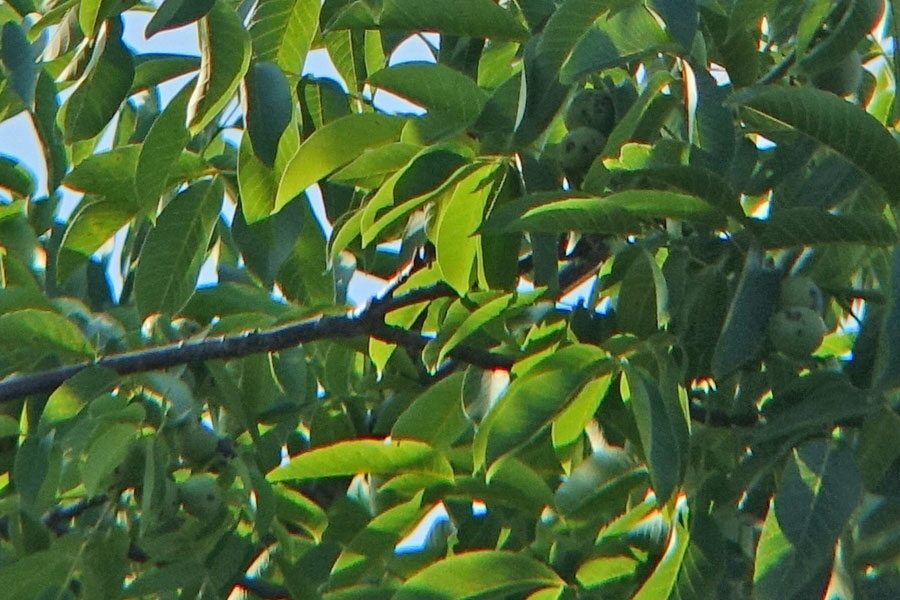 |
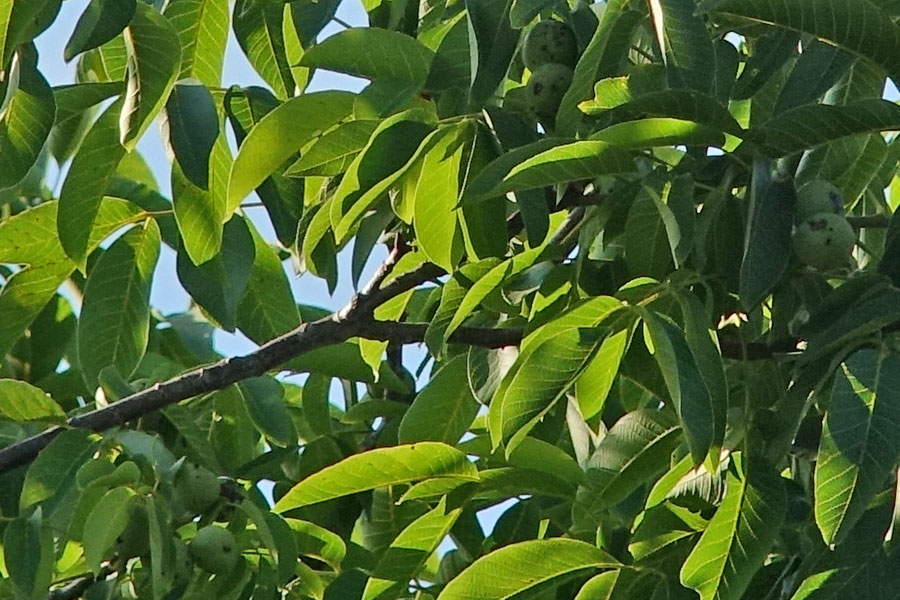 |
| original (made brighter) | original (made brighter) |
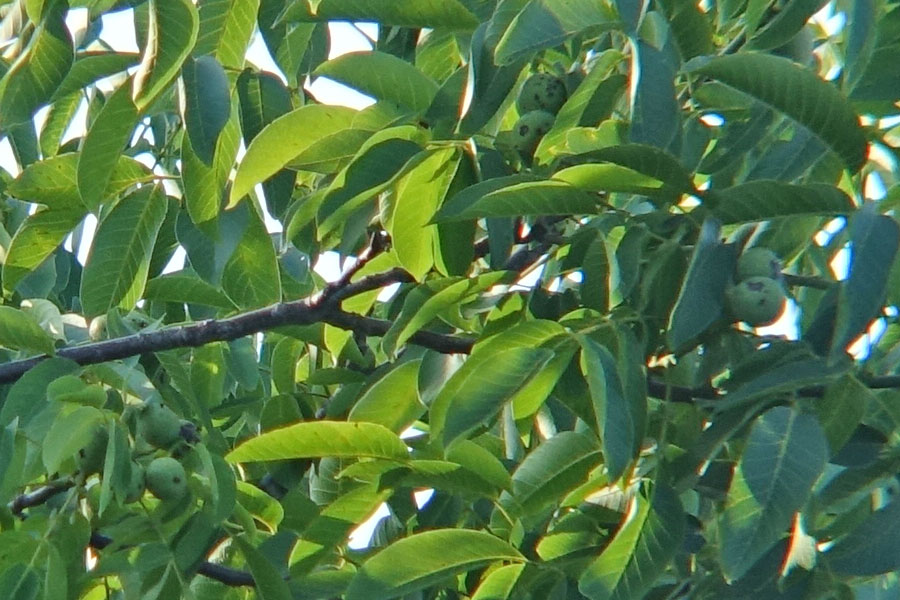 |
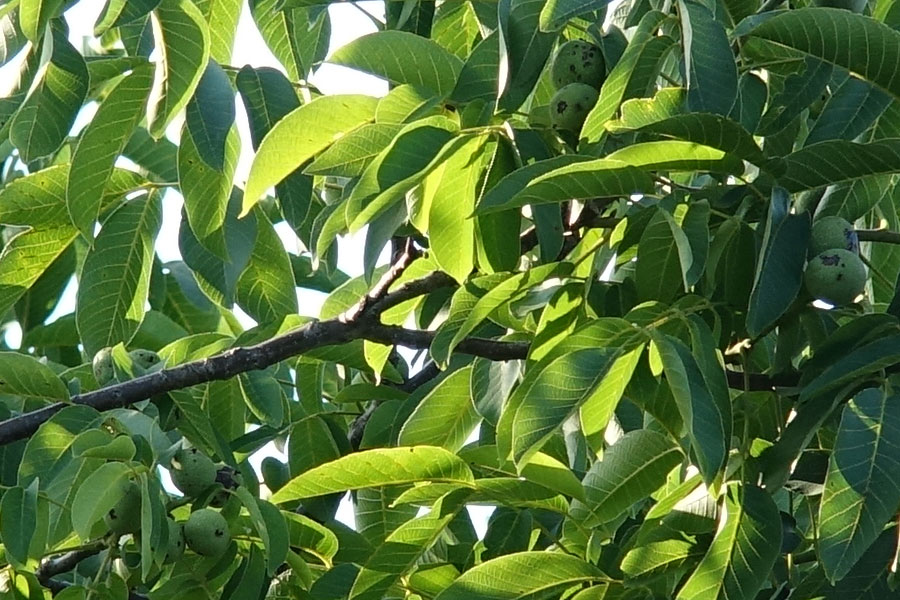 |
| original (made brighter) | original (made brighter) |
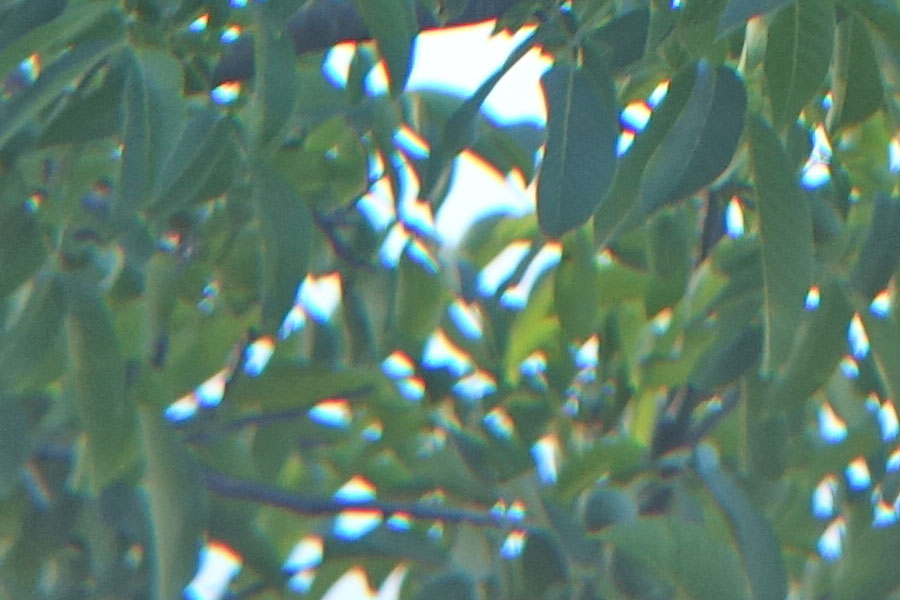 |
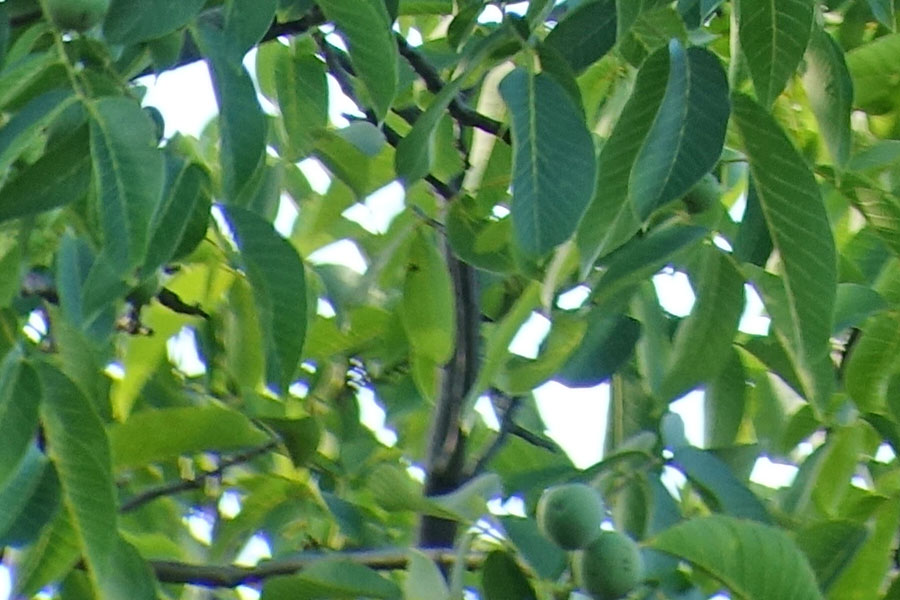 |
| original (made brighter) | original (made brighter) |
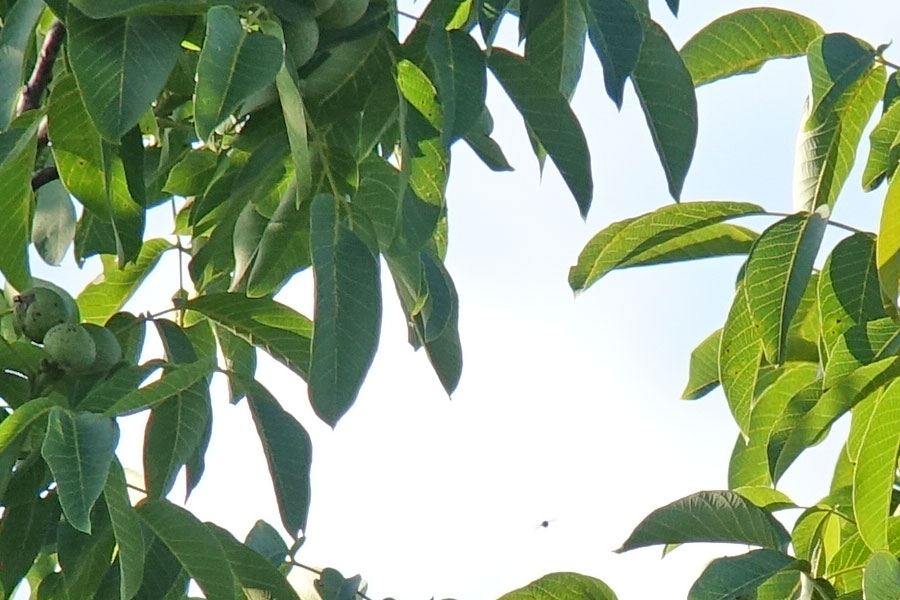 |
|
| original (made brighter) | original (made brighter) |
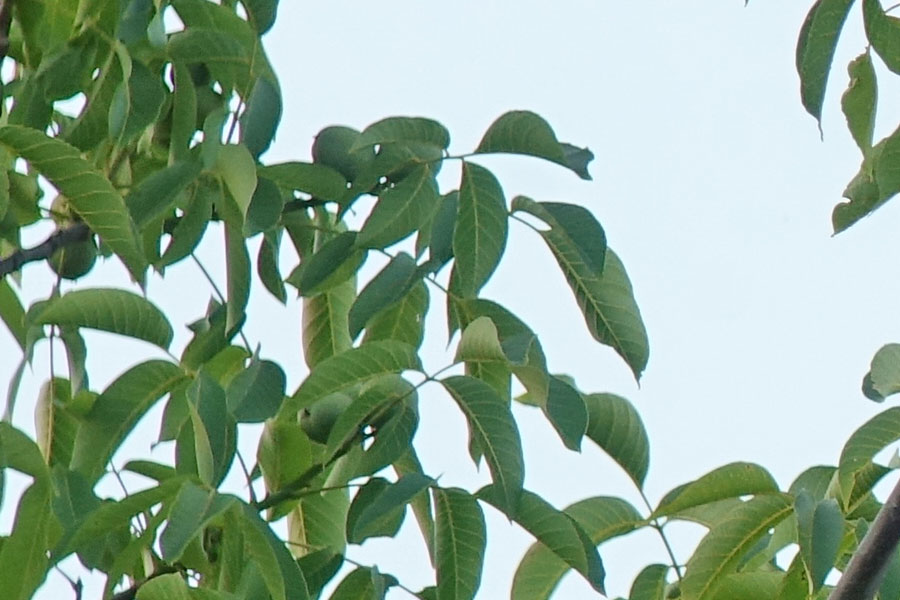 |
|
| original (made brighter) | original (made brighter) |
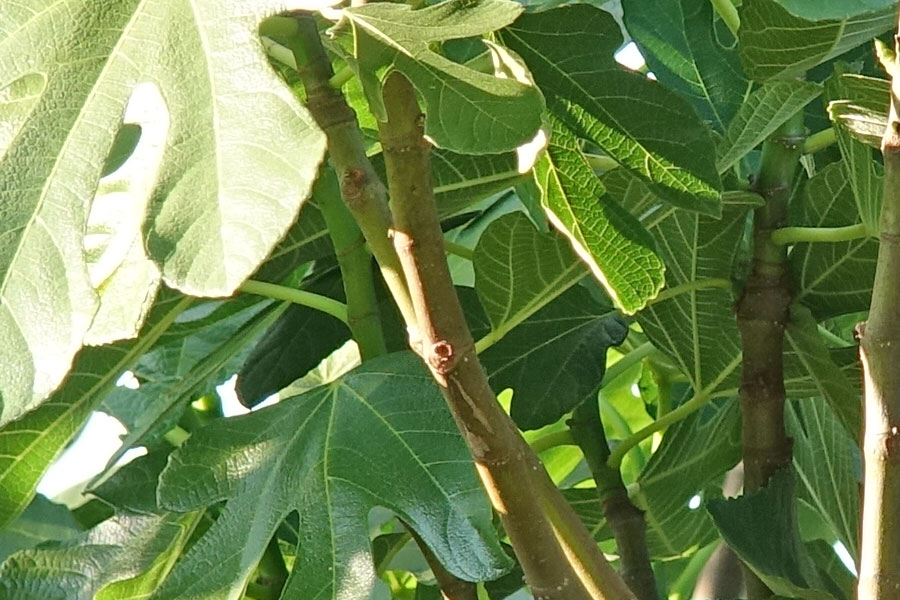 |
|
| original (made brighter) | original (made brighter) |
In several dry runs (December 2020), I checked whether and how the Atik Infinity camera can be operated at the TLAPO1027.
Italic: Works; italic and bold: recommended
|
TLAPO1027 with T2 extension sleeves, overview |
TLAPO1027 with T2 extension sleeves |
Result |
|
TLAP1027 with 2" zenith mirror |
Result for photo left |
Atik Infinity with T2 extension sleeves |
Note: These night tests appear in more detail on page Atik Infinity - Further Experiences (Nightly Tests). More results will be presented elsewhere on this Website.
On March 23, 2021, I made a first "night test" with the Atik Infinity camera at the TS-Optics TLAPO1027 refractor. I used the following configuration: TS-Optics TLAPO1027 refractor on the Star Discovery mount, which I operated with the SynScan app on the iPhone. I performed a 1-star alignment. The camera was adapted to the telecsope using T2 extension sleeves.
I observed M 42/43 (Orion Nebula) and M 78. Here are some of the photos (processed) that I took during this session:
Focusing worked better than with the PS72, the FWHM values were very low, but did not give any final certainty... The alignment was only so so... I only found M 42/43 and M 78 (thanks to its "eyes"). M 42/43 was very nice, but M 78 rather poor. The photos showed strange dark spots in the background, especially with M 78.
On the next day, March 24, 2021, I did a second "night test" with the Atik Infinity camera at the TS-Optics TLAPO1027 refractor, using the same configuration as during the first test. I tried a few things out, everything worked right away, but the results were rather disappointing, except for those for M 42/43. Then also clouds appeared. I observed M 42/43 (Orion Nebula), NGC 1977 (Running Man Nebula), NGC 2024 (Flame Nebula), M 35 and M 78. Here are some of the photos that I took during this session (only processed versions):
Note: This night test is presented in more detail on page ZWO ASI224 Color Camera - Further Experiences.
TLAPO1207 on Star Discovery with SynScan WLAN Module; SQM about 20; the observations started at about 9:10 p.m. and ended at about 0:30 a.m.; SynScan app on iPhone, ASILive (hotpixel removal activated, no darkframes); Observation order: M 13, M 92, M 51, M 16, M 17, M 20, M 11, M 27, M 57.
On the one hand, the difference in the field of view is noticeable, and on the other hand, the TLAPO1027 shows "whiter" stars than the PS 72/432, where the stars are quite colourful. Unless I need the large field of view, I prefer the TLAPO1027.
Note: For details see page ZWO ASI224 Color Camera - Further Experiences.
First tests during daytime show a clear superiority over my double-lens ED refractor PS 72/432. Up to now, I have not had many opportunities to try out the TLAPO1027 at night, but so far, it looked superior. With a camera attached, the results also look better. Particularly, the stars are less bloated than with the PS 72/432* and whiter (less chromatic aberration). I think that further comparisons are not necessary!
*) With a Baader UV/IR cut filter I can reduce the bloating of the stars for the PS 72/432. For the TLAPO 1027, such a filter does not seem to be needed.
| Note: All in all, I have unfortunately used my TLAPO1027 refractor far too little, so I soldit to a star friend in the beginning of October 2024. I therefore can no longer report any further experiences with this scope here. |
| Telescope: Omegon | TLAPO1027 |
| Optical Design | Refractor (Triplet) |
| Primary Mirror Diameter | 102 mm |
| Focal Length, Focal Ratio | 714/715 mm, f/7 |
| Resolving Power (arc secs) | 1.15" ** |
| Limiting Visual Stellar Magnitude | about 12 mag ** |
| Light Gathering Power | 212.3 ** |
| Maximum Practical Visual Power | 204 x |
| Optical Tube Dimensions (diam. x length) | 10.5/12.6 cm x 61.5 cm (transport size) |
| Net Weight Basis | n.a. |
| Net Weight Optical Tube | 5.6 kg |
| Net Weight Complete | n.a. |
Dark Blue: Telescopes that I still own; italic and dark red: telescopes that I owned; black: for comparison; *) own measurement; **) values taken from similar telescopes
See also the table of data for all of my telescopes (and a few more...)
| Telescope | Focal |
Aperture (mm) |
Focal Ratio |
Light Gathering Power |
Maximum+ |
Minimum* |
Maximum* |
Minimum+ |
|||||
Usable Magnification |
Usable Focal
Length of Eyepiece (mm) |
||||||||||||
Factor/Exit Pupil (mm) > |
Manuf. |
1.5 |
2 |
6.5 |
7 |
6.5 |
7 |
1.5 |
2 |
||||
| PS72/432 | 432 |
72 |
6 |
106 |
144 |
108 |
144 |
11.08 |
10.29 |
39.0 |
42.0 |
4.0 |
3.0 |
| ST120 | 600 |
120 |
5 |
290 |
180 |
240 |
18.46 |
17.14 |
32.5 |
35.0 |
3.3 |
2.5 |
|
| TLAPO804 | 480 |
80 |
6 |
130.6 |
120 | 160 | 12.31 | 11.43 | 39.0 |
42.0 |
4.0 |
3.0 |
|
| TLAPO1027 | 714 |
102 |
7 |
212.3 |
153 |
204 |
15.69 |
14.57 |
45.5 |
49.0 |
4.7 |
3.5 |
|
| Explorer PDS150/Dobson 6" | 750 |
150
|
5 |
459 |
225 |
300 |
23.08 |
21.43 |
32.5 |
35.0 |
3.3 |
2.5 |
|
*) Calculated for an exit pupil of 6.5 mm and 7 mm
+) Factor 1.5 or 2 for Dobsonian/Newtonian telescopes; in general, the lower
value of 1.5 is used for Newtonian telescopes; if the manufacturer specified
a different magnification, it is also listed (some manufacturer provide considerably
higher numbers...).
Note: These tables include the StarTravel 120 refractor, a TSWA32 eyepiece (2", 32 mm focal length, 70° viewing angle) that I borrowed together with the StarTravel 120, a 18 mm eyepiece (2", 82° viewing angle), a 38 mm eyepiece (2", 70° viewing angle), and a 56 mm eyepiece (2", 52° viewing angle).
| Magnification | Focal Length of Eyepiece (mm) |
|||||||||||||||
| Telescope | Focal Length of Telescope (mm) |
4 |
7 |
10 |
16 |
18 |
24 |
26 |
32 |
32 |
35 |
38 |
40 |
56 |
||
| PS 72/432 | 432 |
108.00 |
61.71 |
43.20 |
27.00 |
24.00 |
18.00 |
16.62 |
13.50 |
13.50 |
12.34 |
11.37 |
10.80 |
7.71 |
||
| ST120 | 600 |
150.00 |
85.71 |
60.00 |
37.50 |
33.33 |
25.00 |
23.08 |
18.75 |
18.75 |
17.14 |
15.79 |
15.00 |
10.71 |
||
| TLAPO804 | 480 |
125.00 |
68.57 |
48.00 |
30.00 |
26.67 |
20.00 |
18.46 |
15.00 |
15.00 |
13.71 |
12.63 |
12.00 |
8.57 |
||
| TLAPO1027 | 714 |
178.50 |
102.00 |
71.40 |
44.63 |
39.67 |
29.75 |
27.46 |
22.31 |
22.31 |
20.40 |
18.79 |
17.85 |
12.75 |
||
| 150PDS | 750 |
187.50 |
107.14 |
75.00 |
46.88 |
41.67 |
31.25 |
28.85 |
23.44 |
23.44 |
21.43 |
19.74 |
18.75 |
13.39 |
||
| SM127 | 1500 |
375.00 |
214.29 |
150.00 |
93.75 |
--- |
62.50 |
--- |
46.88 |
--- |
--- |
--- |
--- |
--- |
||
| SM102 | 1300 |
325.00 |
185.71 |
130.00 |
81.25 |
--- |
54.17 |
--- |
40.63 |
--- |
--- |
--- |
--- |
--- |
||
| C5 | 1250 |
312.50 |
178.57 |
125.00 |
78.13 |
--- |
52.08 |
--- |
39.06 |
39.06 |
35.71 |
32.89 |
31.25 |
22.32 |
||
| C5 (Red.) | 787.5 |
196.88 |
112.50 |
78.75 |
49.22 |
--- |
32.81 |
--- |
24.61 |
--- |
--- |
--- |
--- |
--- |
||
| C8 | 2032 |
508.00 |
290.29 |
203.20 |
127.00 |
112.89 |
84.67 |
78.15 |
63.50 |
63.50 |
58.06 |
53.47 |
50.80 |
36.29 |
||
| C8 (Red.) | 1280 |
320.00 |
182.86 |
128.00 |
80.00 |
--- |
53.33 |
--- |
40.00 |
--- |
--- |
--- |
--- |
--- |
||
| True Field of View (°) | Focal Length of Eyepiece (mm) |
Camera |
||||||||||||||
Apparent FOV (°) > |
82 |
82 |
72 |
82 |
82 |
65 |
70 |
52 |
70 |
69 |
70 |
68 |
52 |
ZWO |
Atik |
|
| Telescope | Focal Length of Telescope (mm) |
4 |
7 |
10 |
16 |
18 |
24 |
26 |
32 |
32 |
35 |
38 |
40 |
56 |
ASI294 |
Infinity |
| PS 72/432 | 432 |
0.76 |
1.33 |
1.67 |
3.04 |
3.42 |
3.61 |
4.21 |
3.85 |
5.19 |
5.59 |
6.16 |
6.30 |
6.74 |
2.54° x 1.73° | 1.19° x 0.89° |
| ST120 | 600 |
0.55 |
0.96 |
1.20 |
2.19 |
2.46 |
2.60 |
3.03 |
2.77 |
3.73 |
4.03 |
4.43 |
4.53 |
4.85 |
||
| TLAPO804 | 480 |
0.68 |
1.20 |
1.50 |
2.73 |
3.08 |
3.25 |
3.79 |
3.47 |
4.67 |
5.03 |
5.54 |
5.67 |
6.07 |
2.29° x 1.56° | |
| TLAPO1027 | 714 |
0.46 |
0.80 |
0.91 |
1.84 |
2.07 |
2.18 |
2.55 |
2.33 |
3.14 |
3.38 |
3.73 |
3.92 |
4.08 |
1.54° x 1.05° | 0.72° x 0.54° |
| 150PDS | 750 |
0.44 |
0.77 |
0.96 |
1.75 |
1.97 |
2.08 |
2.43 |
2.22 |
2.99 |
3.22 |
3.55 |
3.63 |
3.88 |
||
| SM127 | 1500 |
0.22 |
0.38 |
0.48 |
0.87 |
--- |
1.04 |
--- |
1.11 |
--- |
--- |
--- |
--- |
--- |
||
| SM102 | 1300 |
0.25 |
0.44 |
0.55 |
1.01 |
--- |
1.20 |
--- |
1.28 |
--- |
--- |
--- |
--- |
--- |
||
| C5 | 1250 |
0.26 |
0.46 |
0.58 |
1.05 |
--- |
1.25 |
--- |
1.33 |
1.79 |
1.93 |
2.13 |
2.18 |
2.33 |
0.88° x 0.60° | 0.41° x 0.31° |
| C5 (Red.) | 787.5 |
0.42 |
0.73 |
0.91 |
1.67 |
--- |
1.98 |
--- |
2.11 |
--- |
--- |
--- |
--- |
--- |
1.40° x 0.95° | 0.65° x 0.49° |
| C8 | 2032 |
0.16 |
0.28 |
0.35 |
0.65 |
0.73 |
0.77 |
0.90 |
0.82 |
1.10 |
1.19 |
1.31 |
1.34 |
1.43 |
0.54° x 0.37° | 0.25° x 0.19° |
| C8 (Red.) | 1280 |
0.26 |
0.45 |
0.63 |
1.03 |
--- |
1.22 |
--- |
1.30 |
--- |
--- |
--- |
--- |
--- |
0.86° x 0.58° | 0.4° x 0.3° |
| Exit Pupil (mm) | Focal Length of Eyepiece (mm) |
|||||||||||||||
| Telescope | Focal Ratio |
4 |
7 |
10 |
16 |
18 |
24 |
26 |
32 |
32 |
35 |
38 |
40 |
56 |
||
| PS 72/432 | 6 |
0.67 |
1.17 |
1.67 |
2.67 |
3.00 |
4.00 |
4.33 |
5.33 |
5.33 |
5.83 |
6.33 |
6.67 |
9.33 |
||
| ST120 | 5 |
0.80 |
1.40 |
2.00 |
3.20 |
3.60 |
4.80 |
5.20 |
6.40 |
6.40 |
7.00 |
7.60 |
8.00 |
11.20 |
||
| TLAPO804 | 6 |
0.67 |
1.17 |
1.67 |
2.67 |
3.00 |
4.00 |
4.33 |
5.33 |
5.33 |
5.83 |
6.33 |
6.67 |
9.33 |
||
| TLAPO1027 | 7 |
0.57 |
1.00 |
1.43 |
2.29 |
2.57 |
3.43 |
3.71 |
4.57 |
4.57 |
5.00 |
5.43 |
5.71 |
8.00 |
||
| 150PDS | 5 |
0.80 |
1.40 |
2.00 |
3.20 |
3.60 |
4.80 |
5.20 |
6.40 |
6.40 |
7.00 |
7.60 |
8.00 |
11.20 |
||
| SM127 | 11.81 |
0.34 |
0.59 |
0.85 |
1.35 |
--- |
2.03 |
--- |
2.71 |
--- |
--- |
--- |
--- |
--- |
||
| SM102 | 12.75 |
0.31 |
0.55 |
0.78 |
1.26 |
--- |
1.88 |
--- |
2.51 |
--- |
--- |
--- |
--- |
--- |
||
| C5 | 10 |
0.40 |
0.70 |
1.00 |
1.60 |
--- |
2.40 |
--- |
3.20 |
3.20 |
3.50 |
3.80 |
4.00 |
5.60 |
||
| C5 (Red.) | 6.3 |
0.63 |
1.11 |
1.59 |
2.54 |
--- |
3.81 |
--- |
5.08 |
--- |
--- |
--- |
--- |
--- |
||
| C8 | 10 |
0.40 |
0.70 |
1.00 |
1.60 |
1.80 |
2.40 |
2.60 |
3.20 |
3.20 |
3.50 |
3.80 |
4.00 |
5.60 |
||
| C8 (Red.) | 6.3 |
0.63 |
1.11 |
1.59 |
2.54 |
--- |
3.81 |
--- |
5.08 |
--- |
--- |
--- |
--- |
--- |
||
Blue: Equipment borrowed for comparison purposes; gray: sold equipment; italic: 2" eyepieces
Magnification: Yellow: low (30-50 x); magenta: medium
(80-100 x); violet: high (150-200 x - and more); red: beyond
maximum usable magnification.
Exit pupil: Values in magenta cells are
either too small (< 1 mm) or too large (> 6.4/7 mm); yellow background:
best for galaxies (about 2-3 mm).
| Criteria | Exit Pupil |
Focal
Length of Eyepiece |
|||||
| Category | Application Area | from...to |
Calculated |
On the Market |
Examples |
Existing |
|
| Maximum FOV | Search | 7 |
10 |
49-70 |
40-56* |
40, 56* |
40 |
| Minimum Magnification / Large FOV | Overview, large-area nebulae | 4.5 |
6.5 |
31-36 |
32-35* |
28, 30, 32, 35* |
35 |
| Normal Magnification | Large-area, faint nebulae; nebulae, open star clusters | 3.5 |
4 |
24.5-28 |
24-28* |
24, 25, 26, 28 |
24, 26 |
| Best for many objects, e.g. for most galaxies, and mid-size DSO | 2 |
3 |
14-21 |
15-20* |
15, 16, 18, 20 |
16 |
|
| Maximum Magnification / Maximum Resolution | "Normal" upper magnification limit; globular star clusters | 1 |
1.5 |
7-10.5 |
7-10.5 |
7, 9, 10, 10.5 |
7, 10 |
| Maximum perceptibility of small, low-contrast
details; planetary nebulae, small galaxies; maximum magnification for moon and planets |
0.6 |
0.8 |
4.2-5.6 |
4-6 |
4, 5, 6 |
4 |
|
| Separation of narrow double stars, small planetary
nebulae; perception of faintest details |
0.4 |
0.5 |
2.8-3.5 |
2.5-3.5 |
2.5, 3, 3.5 |
*, 4 |
|
*) Partly available as 2" eyepiece; **) typically no suitable 1,25" eyepieces available; problems with viewing at 40 mm; italic: not possible; red: magnification too high; blue: commercial focal lengths